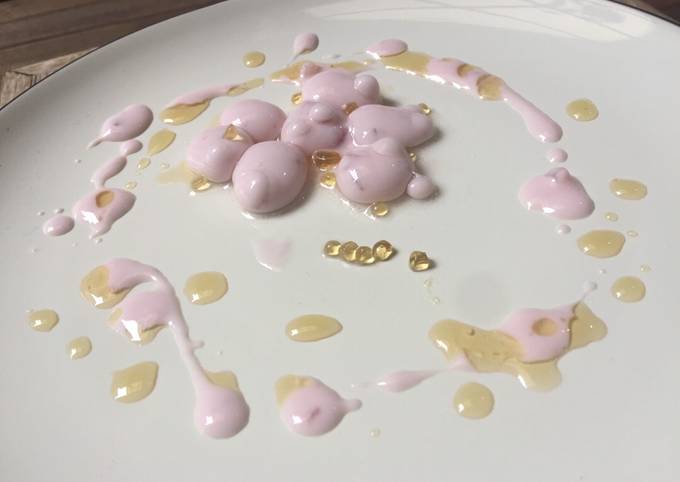Molecular gastronomy-mango juice spherification. The molecular gastronomy methods performed by top chefs on TV always appeared challenging for someone like me who never tried them before. Then, I discovered another method called frozen reverse spherification, which allowed me to fill the silicone mold with mango juice to create the. Molecular gastronomy as a term is several decades old.
 Molecular gastronomy is the scientific approach of nutrition from the perspective of physics and chemistry. The physical properties: force, vector, and mass. Home > Molecular gastronomy, Spherification > Molecular Gastronomy - Spherical mango yolk. You can cook Molecular gastronomy-mango juice spherification using 4 ingredients and 9 steps. Here is how you cook it.
Molecular gastronomy is the scientific approach of nutrition from the perspective of physics and chemistry. The physical properties: force, vector, and mass. Home > Molecular gastronomy, Spherification > Molecular Gastronomy - Spherical mango yolk. You can cook Molecular gastronomy-mango juice spherification using 4 ingredients and 9 steps. Here is how you cook it.
Ingredients of Molecular gastronomy-mango juice spherification
- It's 2 cups of mineral water.
- It's 150 ml of mango juice (can be substituted with any other kinds of juice).
- You need 1 teaspoon of sodium alginate.
- You need 1 teaspoon of calcium lactate.
Hey there, I'm happy to let you know that this post is the first of three back to back basic spherification posts. These recipes and experiments are designed to help you learn and deconstruct. A refreshing liquid sphere made with Frozen Reverse Spherification that bursts in the mouth releasing a delicious juice blend of sweet carrots, zesty orange and tropical mango. The hemispheric silicone mold is included in the Molecular Gastronomy Essentials Kit, the Molecular Gastronomy Premium.
Molecular gastronomy-mango juice spherification instructions
- Prepare 2 cups of mineral water in a big container, then pour in 1 teaspoon of sodium alginate.
- Mix it with a mixer, so that the sodium alginate can blend perfectly with the water.
- Set aside the sodium alginate mixture for 15 mins.
- Prepare the mango juice, then pour in 1 teaspoon of calcium lactate.
- Mix the calcium lactate with the mango juice thoroughly.
- After 15 minutes, scoop approximately 1 teaspoon of the calcium lactate and mango juice mixture, then drop it slowly to the sodium alginate mixture to make sure it forms the shape of a sphere (here i used a fruit bowler as the sphere-making apparatus).
- Wait for approximately 3-5 minutes, then drain out the spheres.
- Place the spheres into a bowl of water, just to make sure there aren’t any excess of sodium alginate mixture left in the outer layer of the spheres.
- (optional) plate the spheres well, just to make it even more appealing. here is a REFERENCE on how to display the spheres.
It may take a while to ensure the sodium alginate is well-hydrated. One of the most interesting things in molecular gastronomy is spherification. Spherification is basically a process that seals a liquid in a jelly like membrane. To make the spherification process easier we took a page from the Alinea cookbook and froze the mango juice in spherical ice molds. Molecular gastronomy is a cross between cooking and science, using scientific experimentation to deconstruct food to its simplest elements, only to reconstruct it in new and unexpected ways.